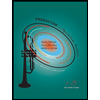Develop a production schedule to produce the exact production requirements by varying the workforce size for the following problem. The monthly forecasts for Product X for January, February, and March are 940, 1,520, and 1,230, respectively. Safety stock policy recommends that half of the forecast for that month be defined as safety stock. There are 22 working days in January, 19 in February, and 21 in March. Beginning inventory is 570 units. Manufacturing cost is $170 per unit, storage cost is $5 per unit per month, standard pay rate is $8 per hour, overtime rate is $12 per hour, cost of stock-out is $9 per unit per month, marginal cost of subcontracting is $8 per unit, hiring and training cost is $160 per worker, layoff cost is $260 per worker, and worker productivity is 0.1 unit per hour. Assume that you start off with 44 workers and that they work 8 hours per day. (Leave the cells blank, whenever zero (0) is required. Input all values as positive values. Round up "Workers Required" to the next higher whole number. Round all other answers to the nearest whole number.) lonuen. Cehruen, Moroh
Develop a production schedule to produce the exact production requirements by varying the workforce size for the following problem. The monthly forecasts for Product X for January, February, and March are 940, 1,520, and 1,230, respectively. Safety stock policy recommends that half of the forecast for that month be defined as safety stock. There are 22 working days in January, 19 in February, and 21 in March. Beginning inventory is 570 units. Manufacturing cost is $170 per unit, storage cost is $5 per unit per month, standard pay rate is $8 per hour, overtime rate is $12 per hour, cost of stock-out is $9 per unit per month, marginal cost of subcontracting is $8 per unit, hiring and training cost is $160 per worker, layoff cost is $260 per worker, and worker productivity is 0.1 unit per hour. Assume that you start off with 44 workers and that they work 8 hours per day. (Leave the cells blank, whenever zero (0) is required. Input all values as positive values. Round up "Workers Required" to the next higher whole number. Round all other answers to the nearest whole number.) lonuen. Cehruen, Moroh
Practical Management Science
6th Edition
ISBN:9781337406659
Author:WINSTON, Wayne L.
Publisher:WINSTON, Wayne L.
Chapter2: Introduction To Spreadsheet Modeling
Section: Chapter Questions
Problem 20P: Julie James is opening a lemonade stand. She believes the fixed cost per week of running the stand...
Related questions
Question

Transcribed Image Text:Develop a production schedule to produce the exact production requirements by varying the workforce size for the following problem.
The monthly forecasts for Product X for January, February, and March are 940, 1,520, and 1,230, respectively. Safety stock policy
recommends that half of the forecast for that month be defined as safety stock. There are 22 working days in January, 19 in February,
and 21 in March. Beginning inventory is 570 units.
Manufacturing cost is $170 per unit, storage cost is $5 per unit per month, standard pay rate is $8 per hour, overtime rate is $12 per
hour, cost of stock-out is $9 per unit per month, marginal cost of subcontracting is $8 per unit, hiring and training cost is $160 per
worker, layoff cost is $260 per worker, and worker productivity is 0.1 unit per hour. Assume that you start off with 44 workers and that
they work 8 hours per day. (Leave the cells blank, whenever zero (0) is required. Input all values as positive values. Round up
"Workers Required" to the next higher whole number. Round all other answers to the nearest whole number.)
January
February
March
Forecast
940
1,520
1,230
Safety stock
Beginning inventory
Net production required
Workers required
Hired
Laid off
Actual production
Ending inventory

Transcribed Image Text:Ending inventory
January
February
March
Labor
Inventory
Hiring
Layoff
Total
Total
Expert Solution
This question has been solved!
Explore an expertly crafted, step-by-step solution for a thorough understanding of key concepts.
This is a popular solution!
Trending now
This is a popular solution!
Step by step
Solved in 2 steps with 1 images

Recommended textbooks for you

Practical Management Science
Operations Management
ISBN:
9781337406659
Author:
WINSTON, Wayne L.
Publisher:
Cengage,

Operations Management
Operations Management
ISBN:
9781259667473
Author:
William J Stevenson
Publisher:
McGraw-Hill Education

Operations and Supply Chain Management (Mcgraw-hi…
Operations Management
ISBN:
9781259666100
Author:
F. Robert Jacobs, Richard B Chase
Publisher:
McGraw-Hill Education

Practical Management Science
Operations Management
ISBN:
9781337406659
Author:
WINSTON, Wayne L.
Publisher:
Cengage,

Operations Management
Operations Management
ISBN:
9781259667473
Author:
William J Stevenson
Publisher:
McGraw-Hill Education

Operations and Supply Chain Management (Mcgraw-hi…
Operations Management
ISBN:
9781259666100
Author:
F. Robert Jacobs, Richard B Chase
Publisher:
McGraw-Hill Education


Purchasing and Supply Chain Management
Operations Management
ISBN:
9781285869681
Author:
Robert M. Monczka, Robert B. Handfield, Larry C. Giunipero, James L. Patterson
Publisher:
Cengage Learning

Production and Operations Analysis, Seventh Editi…
Operations Management
ISBN:
9781478623069
Author:
Steven Nahmias, Tava Lennon Olsen
Publisher:
Waveland Press, Inc.